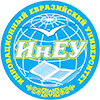Annotation:
The article is devoted to one of the unproved questions of the syntax of the Russian language – the
functioning of egocentric elements in the monuments of ancient Russian writing of the XI-XIV centuries, in the
chronicle genre in particular. It is the diachronic research that will help shed light on the nature, functional and
semantic features of egocentric units in modern Russia.
The article considers the main features of metatextual units, which, in the author's opinion, clarify the
«semantic pattern» of the main text, connect, strengthen and fasten its various elements, and also manifests their
role as a kind of explicators of the speaker's position in Old Russian chronicle texts.
The presence of metatextual units in the chronicle text confirms the scientific position about the
presence of the author's beginning in the works of Old Russian literature, which allows us to identify the author's
attitude to the language code of his utterance (speech work). In general, metatextual interpretation is aimed at
simplifying the understanding of an object and finding a new element base for its description.
Year of release:
2020
Number of the journal:
2(78)
Heading: Humanities

 English
English Русский
Русский Қазақ
Қазақ